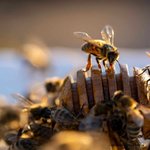Sublime
An inspiration engine for ideas
Feeding Bees Honey: Risks, Benefits, and Best Practices- Carolina Honeybees
Charlotte Andersoncarolinahoneybees.com
a girl—and then a woman—ruled by hungers large and small.
Anne Zimmerman • An Extravagant Hunger: The Passionate Years of M.F.K. Fisher
The second—which we might call “nursery food”—says that children’s food should be separate from adult food, but that grown-ups should carefully select the foods with a view to what they believe is wholesome, rather than catering to a child’s tastes.
Bee Wilson • First Bite: How We Learn to Eat
An era of neurotic, cheerless eating ensued, as all foods with a trace of fat – chicken skin, egg yolks, whole milk – were condemned to waste.
Carolyn Steel • Sitopia
The third—which I’ll call “kid food”—says that children should be fed exactly what they like, no matter how sugary or fake.
Bee Wilson • First Bite: How We Learn to Eat
“Kid food” is based on the presumption that children have a natural palate for simple carbohydrates, fat, sugar, and not much else.
Bee Wilson • First Bite: How We Learn to Eat
Another facet of this enforced shrinking is that those with fat bodies are deemed somehow incapable of knowing what is best for them.
Ruby Tandoh • Eat Up: Food, Appetite and Eating What You Want

